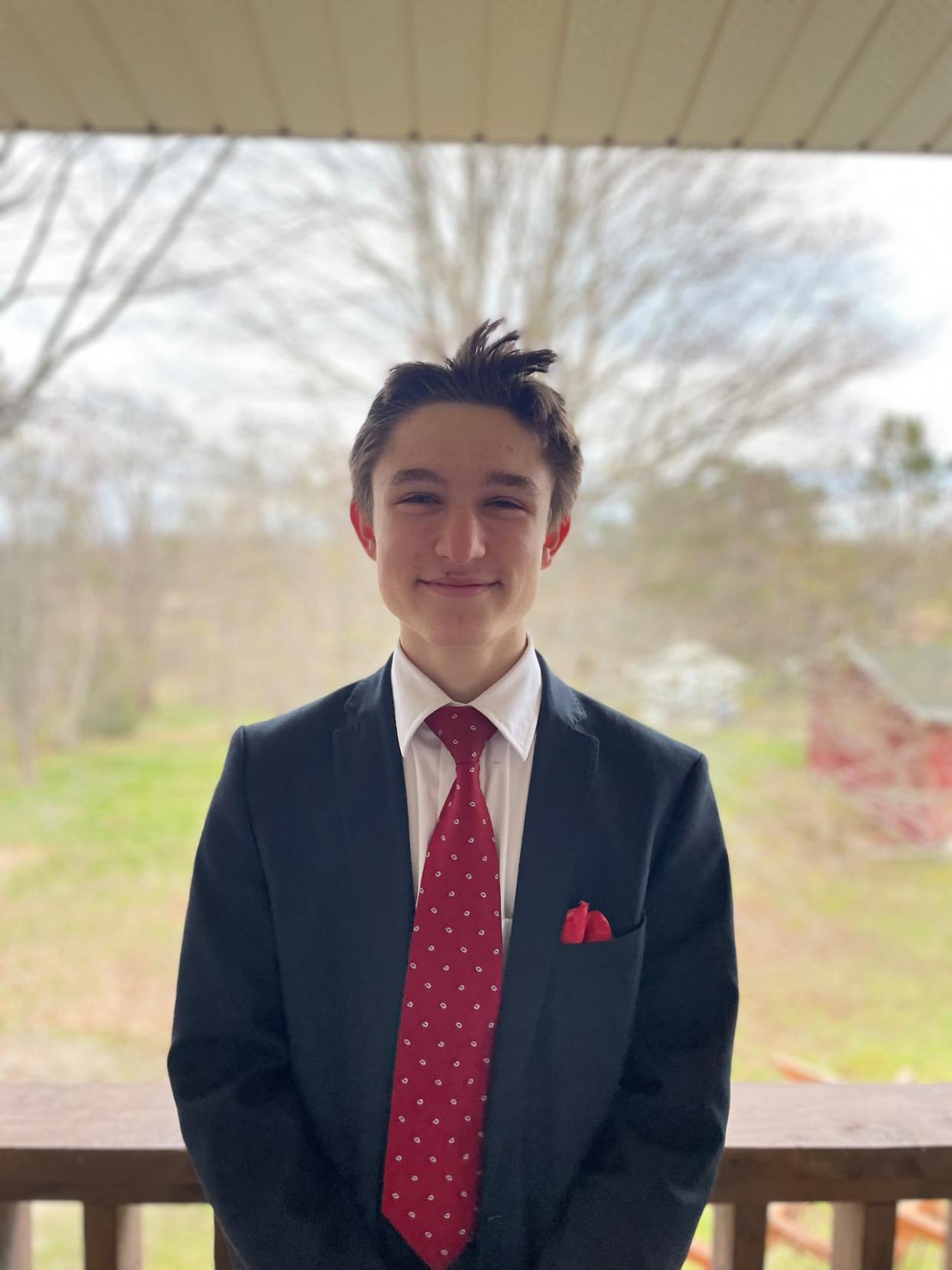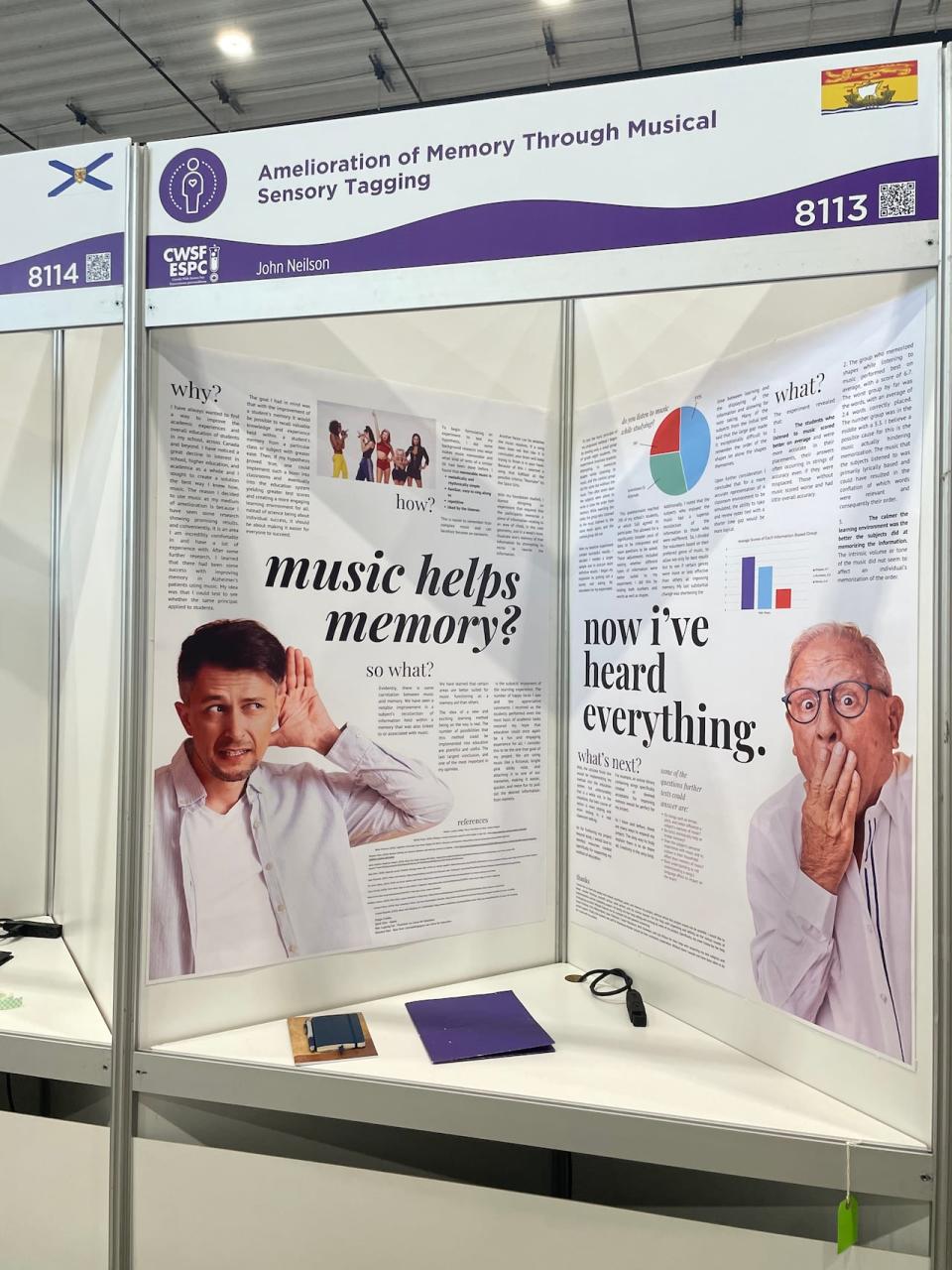He's no 'wannabe.' Sackville student takes home science fair gold with music & memory study

Music in the classroom might be seen as a distraction by some, but could it actually help young people remember things?
John Neilson of Sackville went on a journey to answer that question and it earned him a gold medal in the junior division at the Canada-Wide Science Fair in Ottawa.
"The inspiration for my project was finding a way to help improve people's academic performance, while also giving them a method of connection to education," said Neilson, 14.
He was the only gold medallist from New Brunswick in the junior, intermediate and senior categories for his project, Amelioration of Memory Through Musical Sensory Tagging.
How it started
Neilson began by first doing a preliminary study with 20 people. He had them listen to music while trying to memorize the order of 10, two-dimensional shapes. A week later, he brought them back and had them listen to the same music while trying to write down the order.
He found that students who listened to music did better, which led him to expand his project.
Next, he got a group of 120 students from grades 5-8. They listened to their preferred genre of music while they tried to remember the order of either shapes, numbers or words.
Along with discovering that those who listened to music did better, he also observed that the students who enjoyed the music did better than those who were indifferent to it.

John Neilson’s project tested whether students could retain information better when listening to music. (Submitted by John Neilson)
The students got to choose what songs they listened to. In the pop category, Neilson said the selection included Wannabe by the Spice Girls, as well as a Taylor Swift song and some Backstreet Boys. In the hip-hop category, the artists Drake and Kanye West made an appearance.
Neilson concluded that students who listened to music while learning shapes or numbers did better, on average. He said the average number of shapes placed correctly was 6.8 out of 10, compared to 4.2 without music. And for numbers, 5.4 with music and 4.2 without.
The only group that did worse while listening to music was the group learning words.
This is likely because most of the songs had lyrics, said Neilson, and that could have caused a distraction for the students. It's an area he'd like to look into further, testing songs with lyrics against their karaoke counterparts.
Incorporation in education
Neilson said now that he has the results from his project, if there were to be a real-world application of the study, it would involve actually implementing the findings into the education system.
He said this could work a few different ways. The most successful approach in his study involved students listening to their preferred genre, but this might be difficult in a classroom full of kids with different tastes.
Neilson said educators could use different genres of music per subject, such as classical for math or jazz for science. Then, the distinctness of the genres could help students to retain information specific to a subject.
"Real-world application would really just be listening to it in class," he said.
"While you're writing an essay [or] doing a test or something like that, that's when you would listen to it again, and hopefully bring yourself back to the experience that you had when you were first learning."


